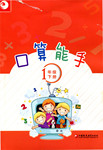题目内容
阅读理解
High school is tough. And if you were to ask Pink her opinion on the subject she'd tell you the same.
Before she became famous, and when she was still called Alicia Moore, the young superstar faced more
than her fair share of high school drama.
In her interview with Faze, Pink admits she was sorted as a troublemaker at school, "The problem
was, I was labelled as trouble-so I was like 'trouble'. I'll show you trouble. You want trouble, well here
it is!"
Unfortunately, Pink began to deliver what the teachers expected and the vicious cycle began. "It's
like the label they give you, you grow into it anyway. They treat you bad, so you act bad," Pink says
and continues. "Did I deserve it?-in the end yes, but I feel I just conformed to the label they gave me.
I think a lot of kids just get frustrated and act the way the teachers expect them to."
It's no surprise that eventually Pink developed a problem with authority, "When they would say it
had to be a certain way I would ask, 'why?' They'd say, 'Because it always has,' so I'd try to prove
them wrong."
Predictably, Pink dropped out of school and soon after began to sing in nightclubs. She sang any
chance she could get and was eventually discovered by a talent scout (星探) while singing in a club in
Philadelphia. She does not regret anything she has done and would not change her past if she could.
"To change that would change who I am," she said in her Faze interview. She believes having faced so
many difficulties at a young age is a good thing. "To experience the good you have to have seen the bad.
Plus it makes you appreciate blessings more," she says.
Pink encourages us to be ourselves and not to worry about being labelled. "Just wait," she says.
"Give it a couple of years then it won't matter. Because no matter what label they give you, the best
thing you can do is prove them wrong."
Before she became famous, and when she was still called Alicia Moore, the young superstar faced more
than her fair share of high school drama.
In her interview with Faze, Pink admits she was sorted as a troublemaker at school, "The problem
was, I was labelled as trouble-so I was like 'trouble'. I'll show you trouble. You want trouble, well here
it is!"
Unfortunately, Pink began to deliver what the teachers expected and the vicious cycle began. "It's
like the label they give you, you grow into it anyway. They treat you bad, so you act bad," Pink says
and continues. "Did I deserve it?-in the end yes, but I feel I just conformed to the label they gave me.
I think a lot of kids just get frustrated and act the way the teachers expect them to."
It's no surprise that eventually Pink developed a problem with authority, "When they would say it
had to be a certain way I would ask, 'why?' They'd say, 'Because it always has,' so I'd try to prove
them wrong."
Predictably, Pink dropped out of school and soon after began to sing in nightclubs. She sang any
chance she could get and was eventually discovered by a talent scout (星探) while singing in a club in
Philadelphia. She does not regret anything she has done and would not change her past if she could.
"To change that would change who I am," she said in her Faze interview. She believes having faced so
many difficulties at a young age is a good thing. "To experience the good you have to have seen the bad.
Plus it makes you appreciate blessings more," she says.
Pink encourages us to be ourselves and not to worry about being labelled. "Just wait," she says.
"Give it a couple of years then it won't matter. Because no matter what label they give you, the best
thing you can do is prove them wrong."
1. According to the passage, what is Pink's suggestion?
A. Do it your way.
B. To be confident.
C. Don't make trouble.
D. To be happy.
B. To be confident.
C. Don't make trouble.
D. To be happy.
2. What does the underlined word "labelled" in the second paragraph mean?
A. Known.
B. Realized.
C. Classified.
D. Discovered.
B. Realized.
C. Classified.
D. Discovered.
3. The passage implies that students ________.
A. will usually follow their teachers' advice
B. will act the way their parents expect them to
C. are likely to behave in a bad way as others expect
D. are willing to meet with many difficulties
B. will act the way their parents expect them to
C. are likely to behave in a bad way as others expect
D. are willing to meet with many difficulties
4. Pink felt that high school was hard because ________.
A. she fell behind others
B. she was misunderstood
C. she was unsuccessful
D. she felt lonely
B. she was misunderstood
C. she was unsuccessful
D. she felt lonely
1-4: ACCB

练习册系列答案
 口算能手系列答案
口算能手系列答案
相关题目